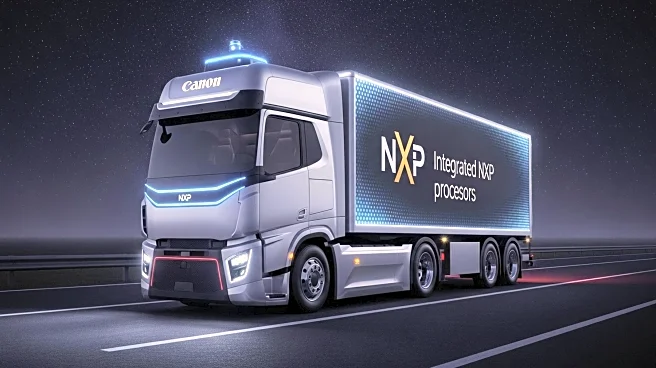Rapid Read • 8 min read
Digital twins in logistics are revolutionizing supply chain management by creating virtual replicas of real-world supply chain networks. These digital models allow companies to simulate, monitor, and improve operations without disrupting daily business activities. By integrating real-time data from sensors, GPS, and warehouse operations, digital twins provide a comprehensive view of logistics operations, enabling businesses to predict and respond to changes in customer demand or supplier delays. This technology leverages IoT sensors, cloud computing, AI, and predictive analytics to enhance decision-making processes across various logistics functions, including warehouse management, transportation, and inventory forecasting.
AD
The implementation of digital twins in logistics is significant as it offers numerous benefits, including improved real-time visibility, optimized delivery routes, and reduced downtime through predictive maintenance. By enhancing demand forecasting and enabling proactive risk mitigation, digital twins help businesses avoid disruptions and improve operational efficiency. This technology supports faster, data-driven decision-making, which is crucial for maintaining competitiveness in the rapidly evolving logistics industry. Companies that adopt digital twins can expect to see improvements in supply chain resilience, cost reduction, and customer satisfaction, ultimately leading to better margins and market positioning.
As digital twin technology continues to evolve, businesses are likely to invest more in IoT and data infrastructure to fully leverage its capabilities. Integration with existing ERP and WMS systems will be crucial for seamless data flow and enhanced visibility. Companies will also need to focus on cybersecurity and data privacy to protect sensitive information within digital twin environments. Developing key performance indicators (KPIs) to track performance improvements will help businesses measure the value of digital twins and identify areas for further optimization. As more companies adopt this technology, it is expected to become a standard practice in logistics management.
The adoption of digital twins in logistics also raises ethical and legal considerations, particularly concerning data privacy and security. As these models hold sensitive information, companies must implement strict controls to ensure data protection. Additionally, the reliance on digital twins may lead to workforce changes, requiring employees to adapt to new technologies and processes. This shift could necessitate retraining and upskilling initiatives to ensure that logistics professionals can effectively utilize digital twin technology. In the long term, digital twins may drive significant changes in supply chain strategies, emphasizing agility and resilience in response to global challenges.
AD
More Stories You Might Enjoy










